Fraction visualization Worksheets for Ages 3-8
11 filtered results
-
From - To
Explore our engaging Fraction Visualization Worksheets designed for children ages 3 to 8! These colorful and interactive worksheets help young learners grasp the concept of fractions through fun activities like identifying, comparing, and manipulating fractions. Tailored to meet developmental needs, each worksheet promotes critical thinking skills while making math enjoyable. Whether you're at home or in the classroom, these resources encourage hands-on learning and visual recognition of fractions. Let your child embark on an exciting mathematical journey as they enhance their understanding of fractions with our captivating worksheets. Perfect for early math education, they foster confidence and enjoyment in learning!
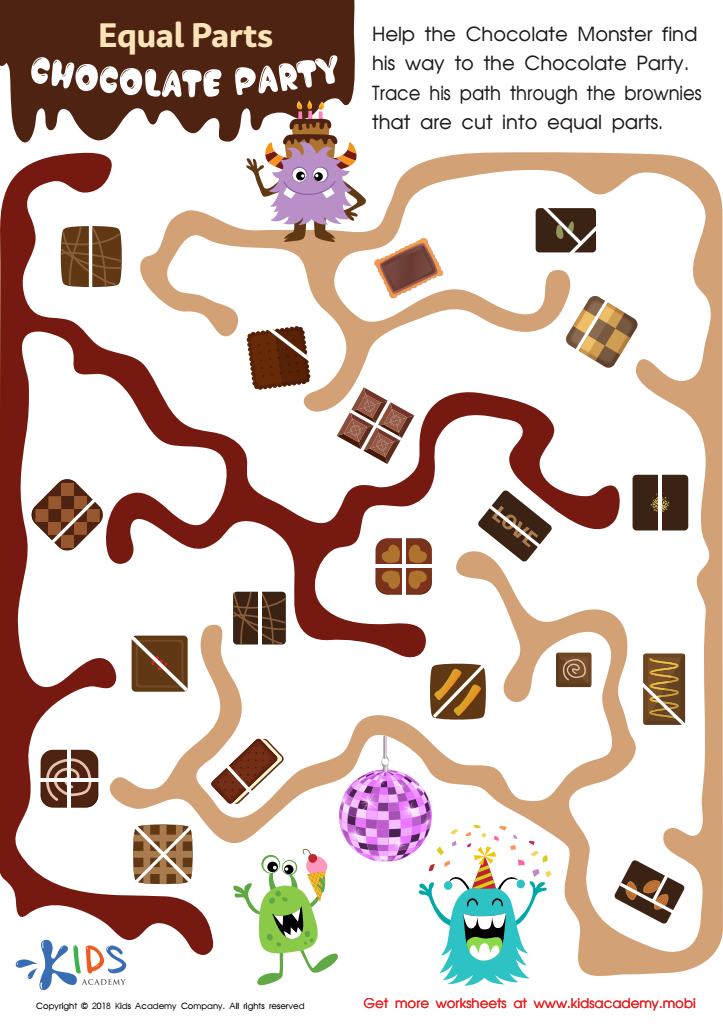

Equal Parts: Chocolate Party Worksheet
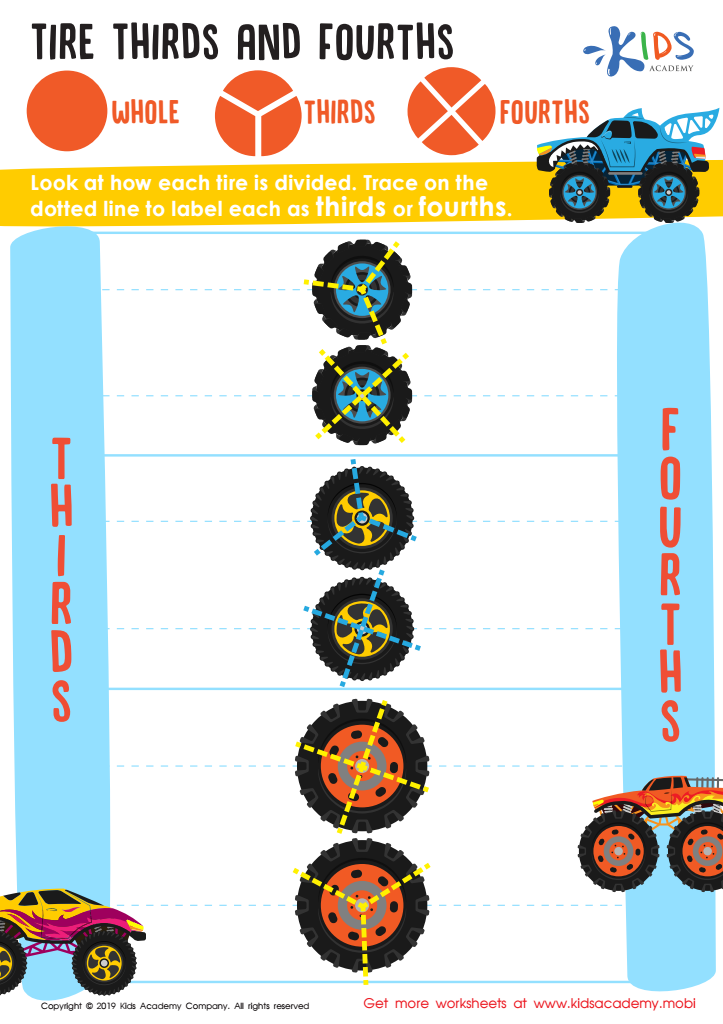

Tire Thirds and Fourths Worksheet
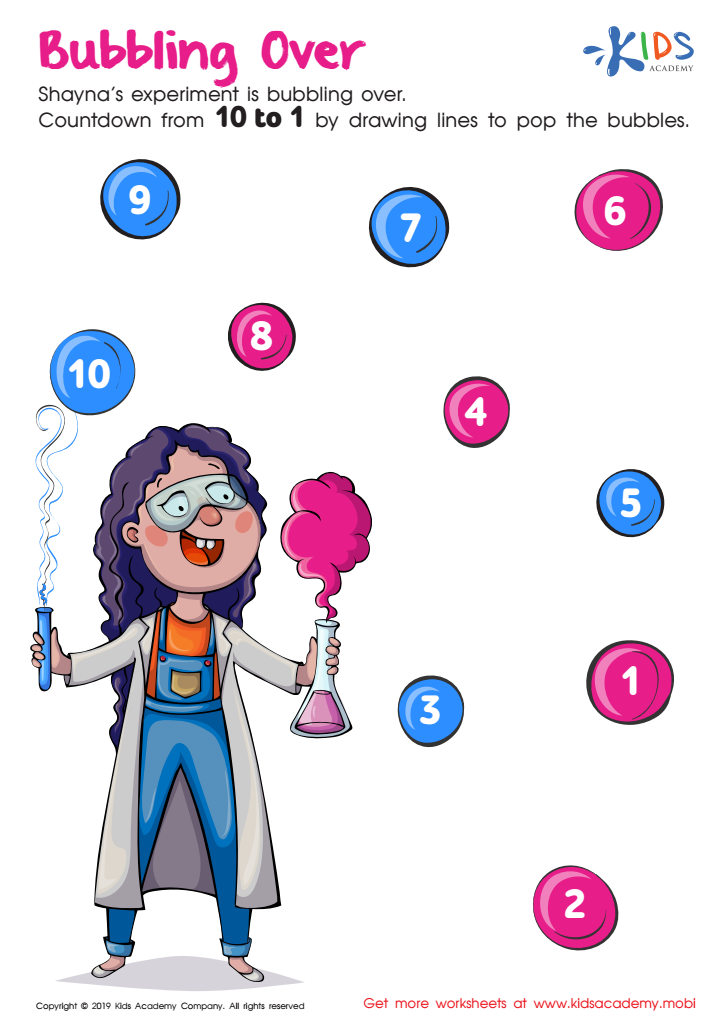

Bubbling Over Worksheet
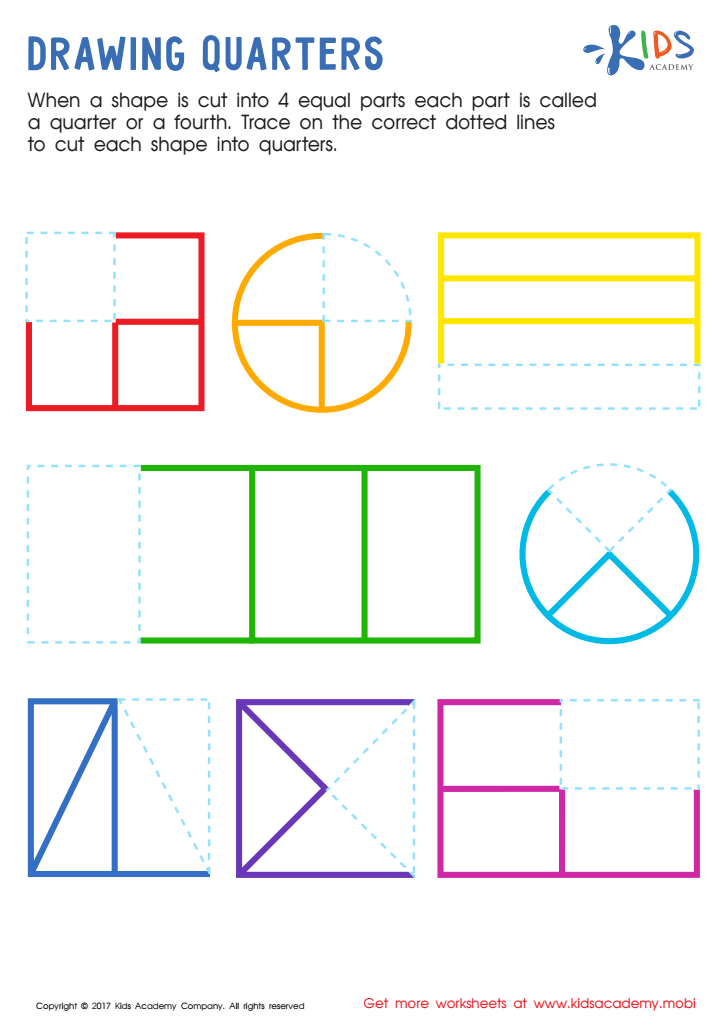

Drawing Quarters Worksheet
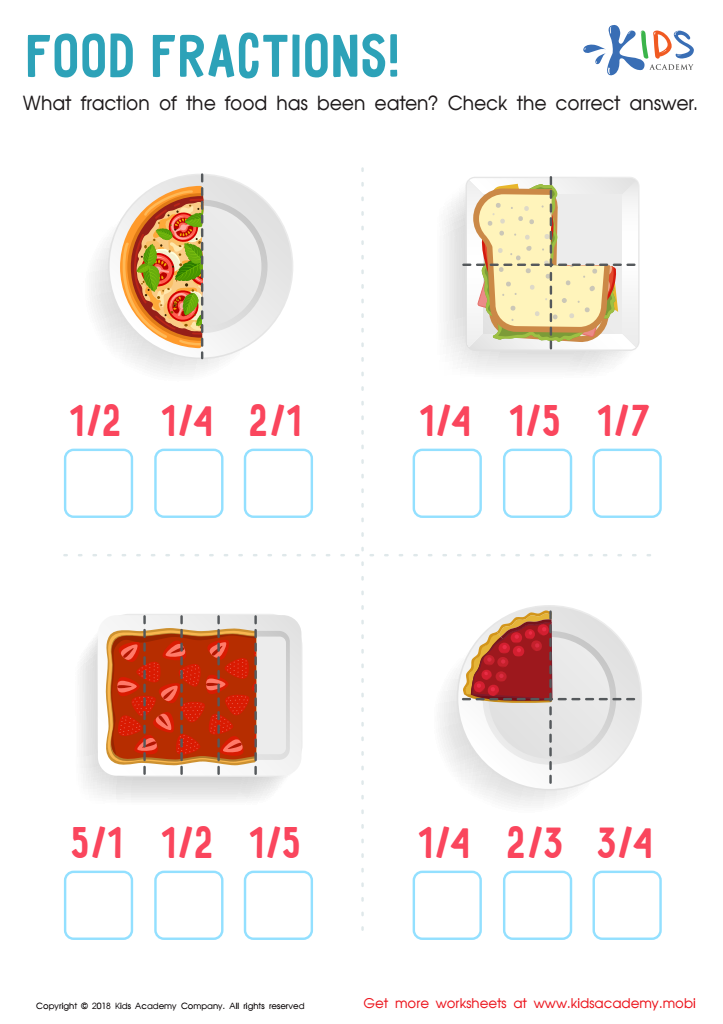

Food Fractions Worksheet
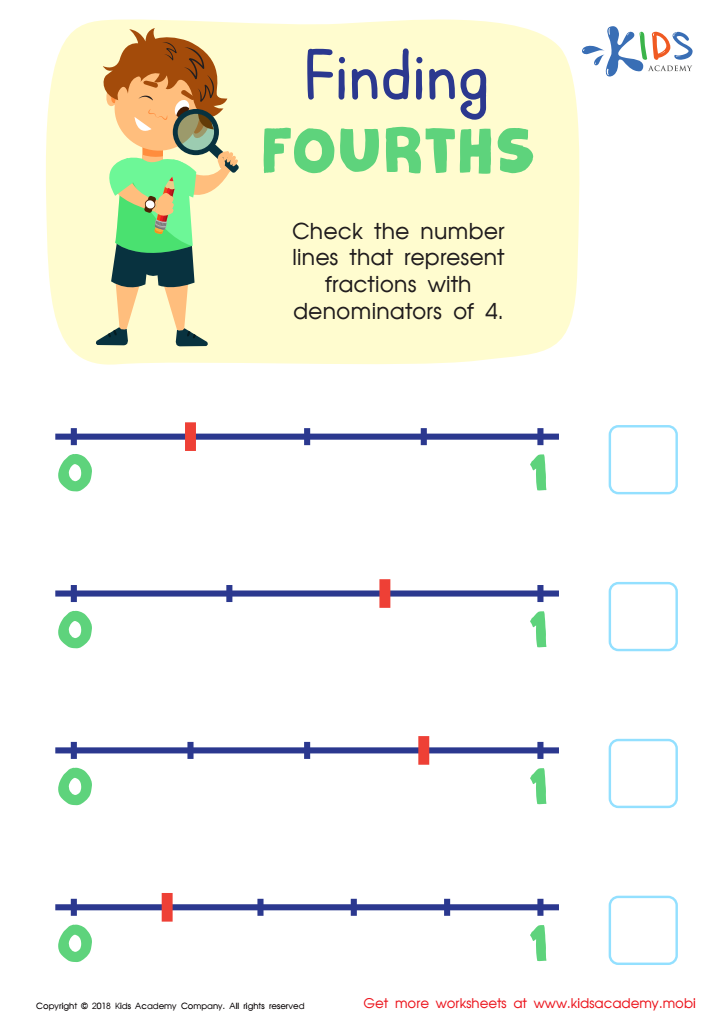

Finding Fourths Worksheet
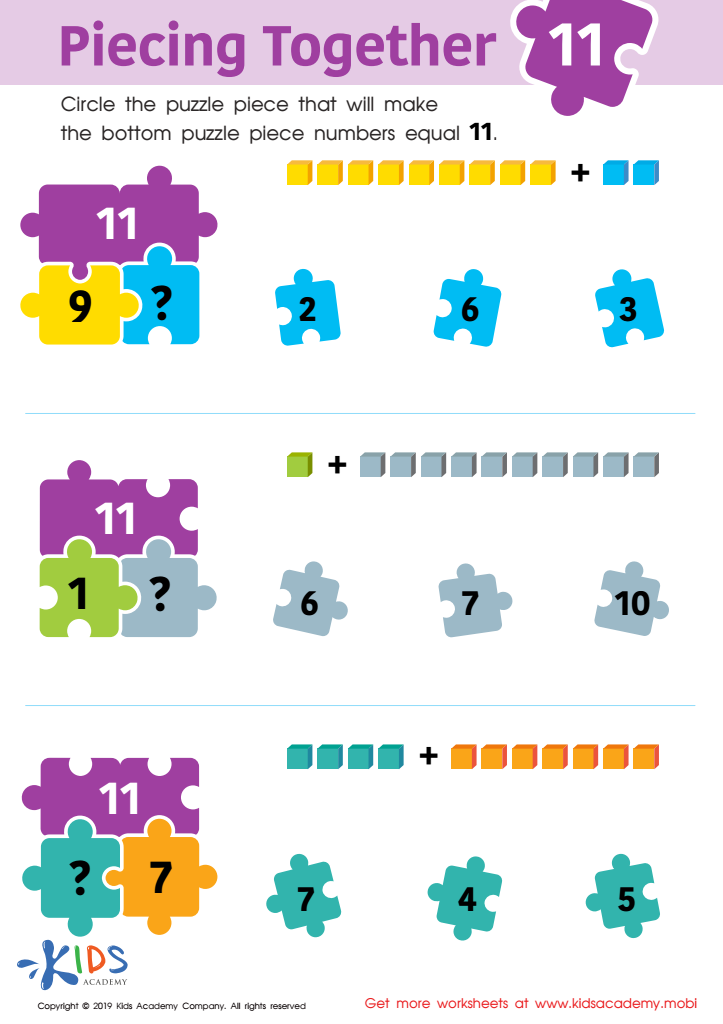

Piecing Together 11 Worksheet
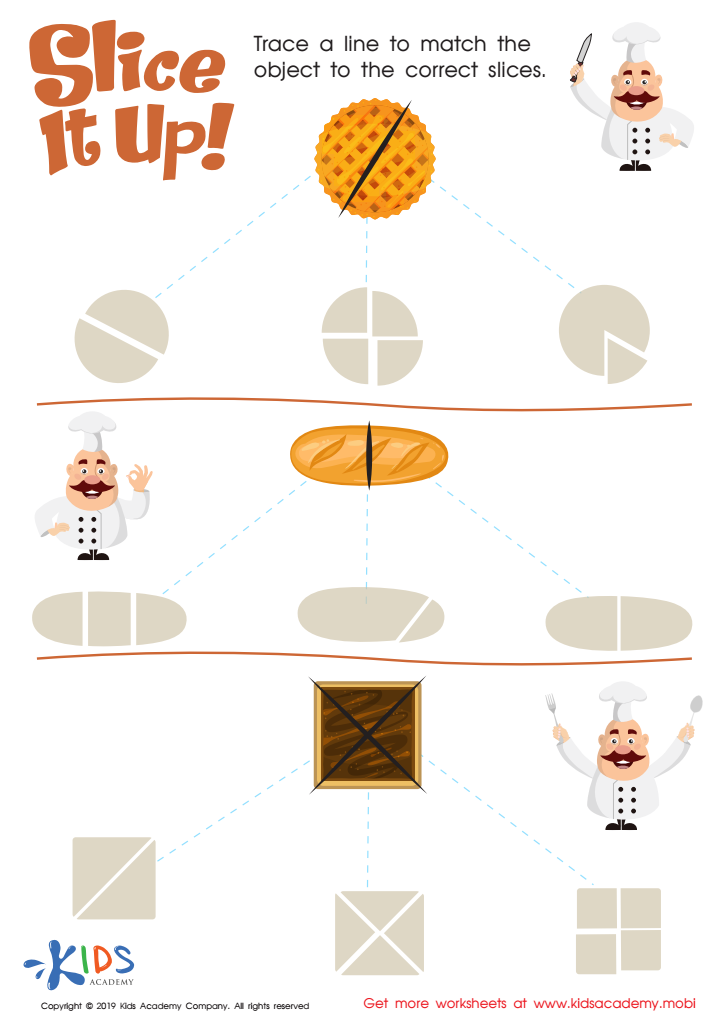

Slice It Up Worksheet
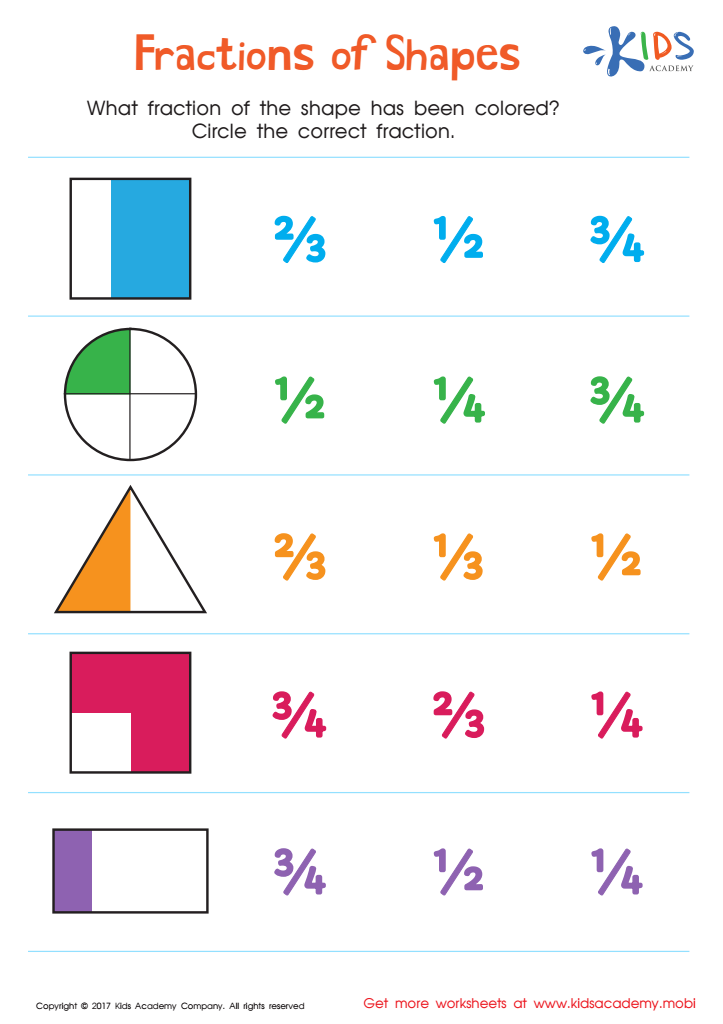

Fractions of Shapes: Math Concept Worksheet
Fraction visualization is crucial for children ages 3-8 as it lays the groundwork for a deep understanding of mathematics. At this developmental stage, children are like sponges, absorbing new concepts that will shape their future learning. By focusing on how to visualize fractions, parents and teachers can foster mathematical reasoning and help children grasp abstract concepts more concretely.
Visualization helps children interpret and manipulate parts of whole. For instance, using everyday objects, like pizza or fruit, to represent fractions makes the ideas relatable and engaging. It also cultivates important skills such as comparing sizes, identifying portions, and even basic addition and subtraction of fractions. Understanding fractions visually prepares children for more complex mathematical tasks in later years, ensuring they won’t struggle when they encounter these concepts again in higher grades.
Moreover, promoting fraction visualization can support critical thinking and problem-solving abilities, traits that benefit children well beyond the math classroom. By incorporating visual tools and hands-on activities, parents and teachers can inspire a love for math and cultivate a strong foundation that influences academic success and everyday decision-making in later stages of life. Ultimately, supporting fraction visualization ensures children are not just rote learners but true mathematical thinkers.
 Assign to My Students
Assign to My Students


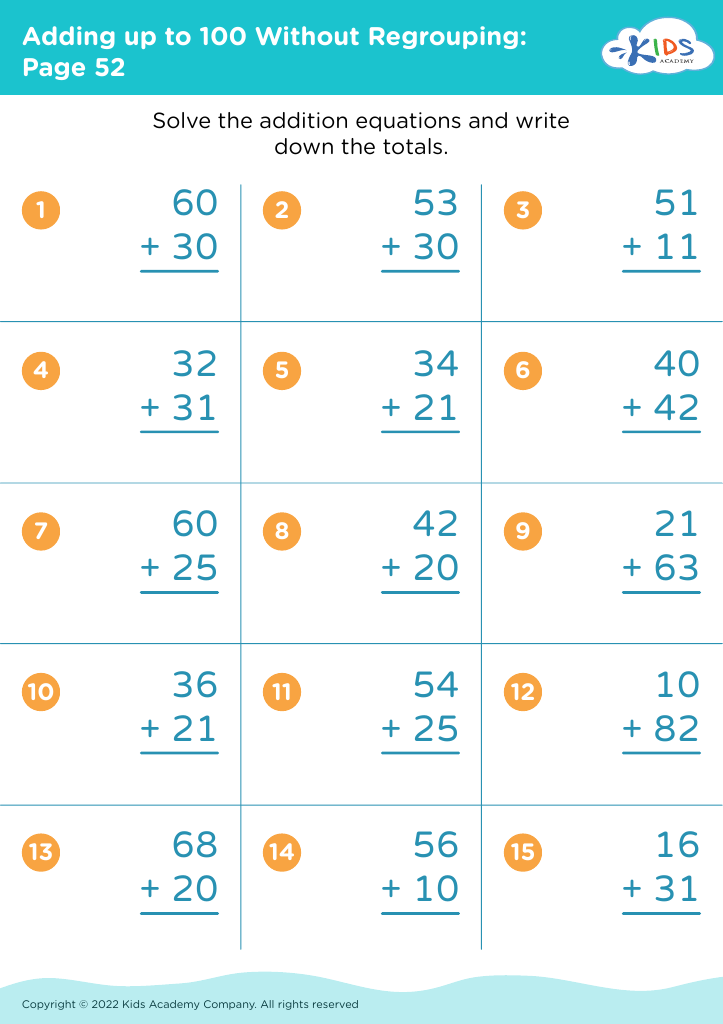

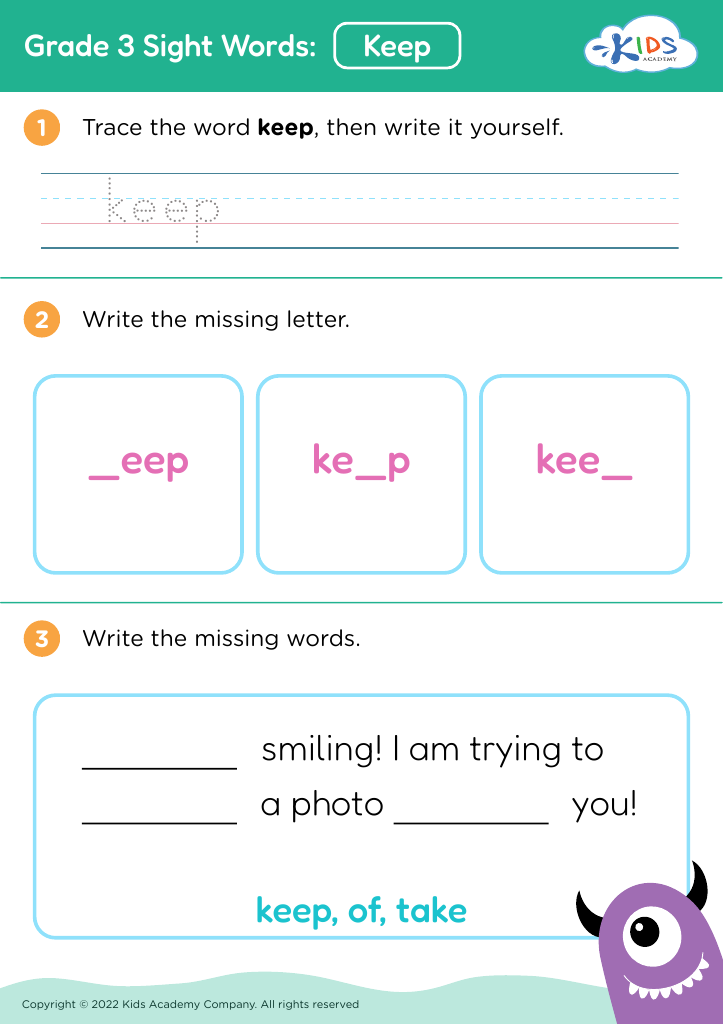








.jpg)











